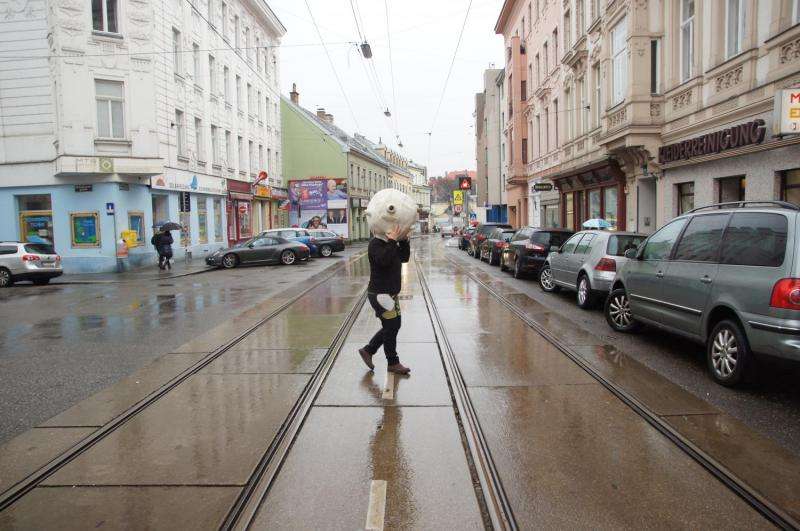Dementia as seen through art and design

Demographic change requires a new approach to dementia. A project supported by the Austrian Science Fund FWF creates awareness of the issue using innovative artistic methods that sharpen the perception and sensitivity of people unaffected by the ailment.
Dementia patients often suffer from social stigma. Everyday errands such as shopping, financial transactions or going to the theatre may be difficult for them, so they withdraw from society in order to avoid rejection and embarrassment. "D.A.S. Dementia. Arts. Society." is the title of an FWF-funded project in which the Viennese artist and researcher Ruth Mateus-Berr and her team are investigating ways to avoid this tendency and to change society's attitude to dementia for the better. In the coming three years, the project team will tackle the issues of an ageing society by focusing on new realities and creating awareness of what it means to be living with dementia. "Where social policy, nursing and medicine are at the end of their tether, strategies involving art and design may make people with dementia see their own skills and their situation in a new way. This is a completely novel approach," explains principal investigator Mateus-Berr.
Artistic interventions
For non-sufferers it is hard to understand what it means slowly to lose one's mental faculties and, consequently, one's bearings in the world. For sufferers it is a state mostly marked by anxiety and confusion – these are the feelings that Mateus-Berr intends to investigate with her interdisciplinary research team in this arts-cum-science project. In co-operation with different target groups they have developed artistic initiatives that enable the participants to approach the topic from an emotional angle. The team of Mateus-Berr from the Vienna University of Applied Arts works with children and young people, with adults at adult education institutions, with artists and with sufferers and their caregivers. The participants then discuss and reflect on their experience with experts.
Changing perspectives
The first requirement is awareness-building. "Particularly young people often have no understanding of the elderly," notes the project leader, who is a professor at the University of Applied Arts in Vienna and once a week also teaches young people at the Bertha von Suttner School which is located on a ship anchored on the River Danube. "This is why we want to explain to young people and to society what it feels like when your own senses betray you," says Mateus-Berr.
The research project arose from the master project "Feel Dementia," conducted by two students of the Master's degree course "Social Design. Arts as Urban Innovation" at the Vienna University of Applied Arts: the artist Cornelia Bast and the designer Antonia Eggeling. The two women designed two interventions: an audio file that floods listeners with a wealth of information and tasks in order to create confusion and a procedure which enables participants to share the patients' situation by means of an art object called "Fokung Wirkus" (Cornelia Bast).
Shaped like a giant diver's helmet, the object is placed over participants' heads, restricting their view. Different lenses providing different perspectives are the only way to see. This triggers irritation and a feeling of helplessness and can even lead to a sense of "having a nervous breakdown," as some young people said in their feedback. The next step consists of documenting one's feelings. How does it feel to be confused? The participants deal with this question through art, in writing or in interviews. The project team then documents and evaluates these "confusion logs." Exhibitions about the project are in the pipeline.
Designing the society
"D.A.S. Dementia. Arts. Society." is characterised by a new approach to complex issues. Putting oneself empathetically in someone else's shoes and in different situations, observing and questioning processes are strong points of art and design. In the case at hand, these faculties are designed to trigger social processes and provide interdisciplinary approaches underpinned by a scientific basis. "Interdisciplinarity works particularly well in the arts, if you don't shrink from asking questions about other disciplines, such as medicine. We have to learn to understand others so as to permit change," emphasises Ruth Mateus-Berr. The artist specifies that the project aims at developing practice-oriented and sustainable formats, such as workshops, design and art concepts, in order to help overcome in the course of time the challenges the issue presents both to society and those affected. "I see many possibilities," she concludes.

















